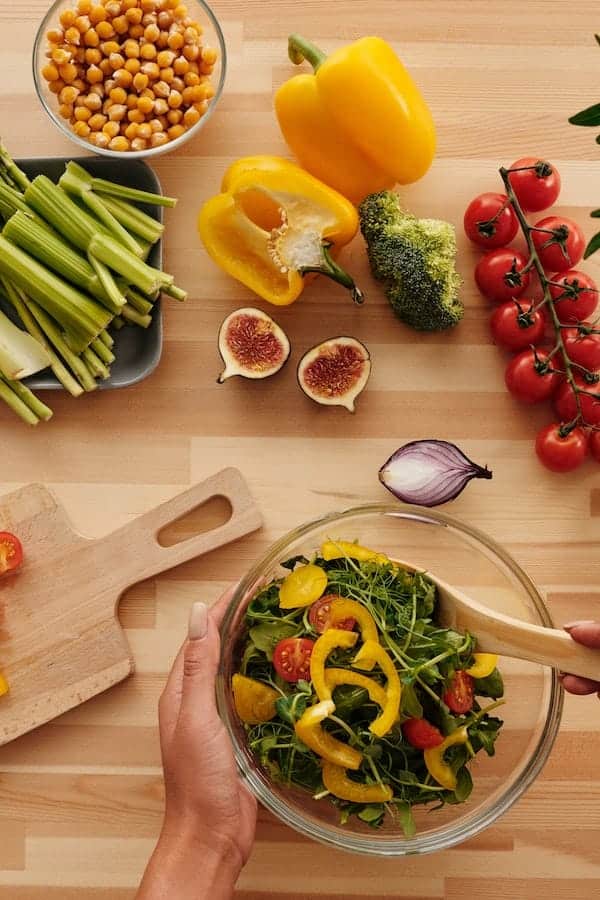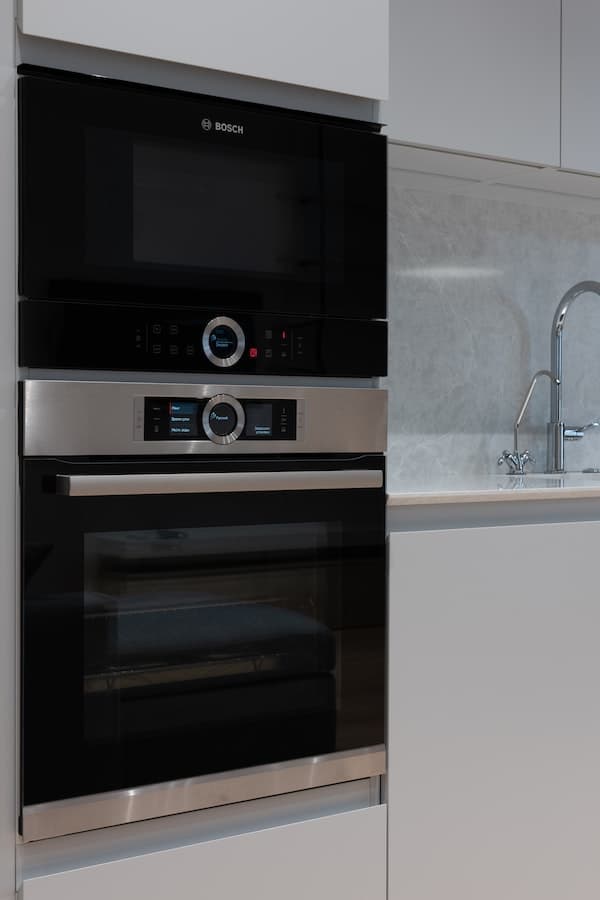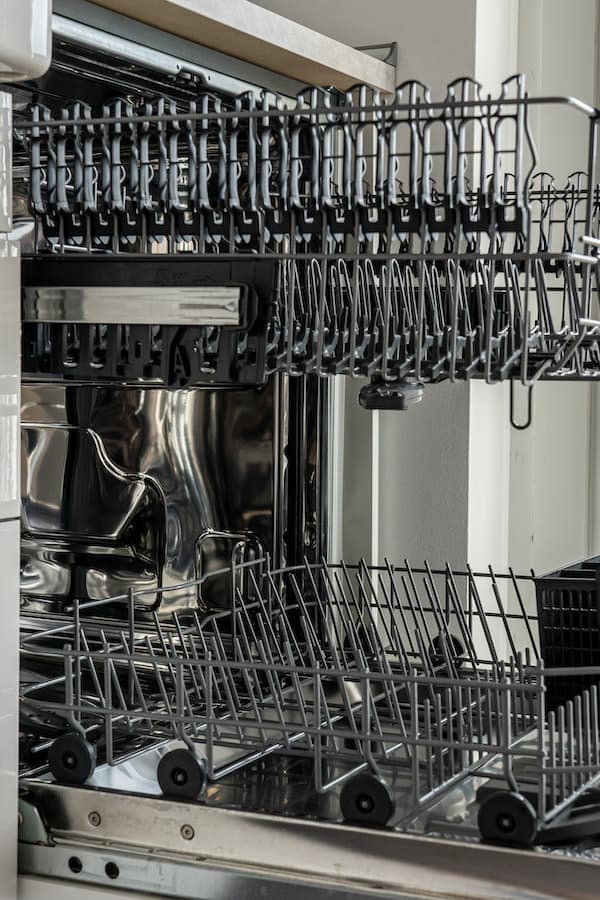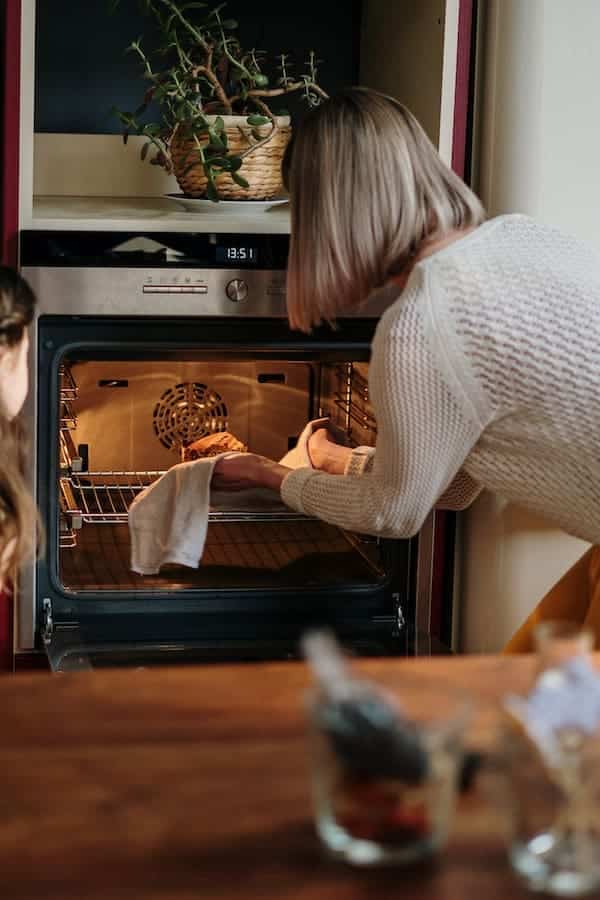Pyrex dishes are commonplace in many households across the US as they are durable and convenient for cooking many dishes. Pyrex is also easy to clean and can help to cook food evenly.
From casserole dishes to baking deep baking trays, Pyrex comes in many forms but you may be wondering if it is safe to be used in the oven.
While Pyrex can be used in the oven there have been instances where customers have reported glass tracing or even exploding when used in the oven. This means that while, technically, Pyrex can be used in the oven certain safety procedures need to be followed so you do not come to any harm or damage your oven.
We take a look at how to use Pyrex safely and answer any questions that you may have so that you can cook your favorite dishes using your favorite Pyrex dishes without coming to any harm.
There may be affiliate links in this article. You can read more about this in my disclosure.
What Is Pyrex?

Pyrex is a brand name, made by Corning Glassware Company, of heat-safe glass glassware that is made using borosilicate glass. This type of glass is heat resistant and is also resistant to electricity and chemicals.
The reason that borosilicate is the preferred glass is that it expands approximately one-third less than standard glass. The name was derived from the components used to make this glass and is still used today even though products are now made up of soda lime glass, which has similar properties as borosilicate.
How to Identify Pyrex Glass?
There are many glass cooking dishes on the market, many that unscrupulously claim to be Pyrex but are an imitation. Luckily, certain markings can help you identify if a product is Pyrex or not.
When inspecting glass dishes to see if they are Pyrex you can look at stamps and logos that will identify whether it is a true Pyrex dish and whether it is new or vintage. You can look for the below identifiers to find out more about your glass dish:
- Small blowing glass is included on the stamp of early pieces of Pyrex
- In older Pyrex, you will see markings at the bottom of the dish
- The stamp at the bottom of the dish will feature Pyrex in capital letters within a circle alongside CG which stands for Corning Glassworks
- The circle stamp changed to one of the straight lines in the 1960s
- In the 50S “Made in the U.S.A.” was added in capital letters alongside the trademark wording
- Bowls and casserole dishes have an inventory number as part of the stamp at the bottom
- Certain dishes made after the 70s have information on how to use or where to use them
As you can see from this list there are many ways to identify Pyrex but a lack of a back stamp does not necessarily mean that a dish is not Pyrex. Many of the colored dishes, for example, do not have a stamp.
If you have a vintage dish the original stamp may have washed so it is worth taking this not account before you dismiss it being Pyrex. If you are buying vintage you can check with a dealer if you want to know if a dish is authentic.
How Can You Tell If Pyrex Is Oven-Safe?

It is important to be safe when using any type of kitchenware but it is especially the case when you are using Pyrex and any other glassware. For ultimate safety, you should check the instructions or packaging on the product that you buy.
If you do not have instructions then you should look out for information on the dish, for example, it may say “preheated oven only”. The Pyrex website also has information on how to use Pyrex dishes safely as well as ideas on what to cook in the dishes.
Is It Safe to Put Pyrex in the Oven?
While some precautions need to be taken it is safe to use both old and new Pyrex in the oven and the microwave. The key to using the Pyrex safely is to avoid sudden temperature changes that will shatter the glass.
What Happens When Pyrex Goes in the Oven?
As Pyrex is made of glass, it will enter the process of thermal shock as it is exposed to a sudden change in temperature. The thermal shock makes the glass expand and potentially shatter.
There is the following warning on Pyrex packing and their website:
“Uneven heating, direct contact with heating elements, and sudden temperature changes (hot glassware coming in contact with something cool or wet, or cold glassware coming in contact with something very hot) can cause the glass to shatter or break.”
Pyrex which was produced before 1998, was made with borosilicate glass which is designed to be shock-resistant it was produced with soda-lime glass which is not shock-proof. This means that modern Pyrex is more likely to shatter if it experiences extreme temperature changes.
[amazon box=”B0157G34AY” template=”vertical”]How to Put Pyrex in the Oven Safely?
If you want to put Pyrex in the oven but are worrying about it shattering you should avoid putting your Pyrex into a very hot oven after it being in a cold environment, especially if the dish has been in the refrigerator. The same goes for taking the dish out of a hot oven and putting it directly into the refrigerator.
It is advisable to preheat your oven before putting the Pyrex dish in so that it is not exposed to a drastic change and also to allow the dish to come to room temperature before placing it in the oven or refrigerator.
Can Pyrex Lids Go in the Oven?
The lids from Pyrex dishes should not be placed in the oven as they will melt.
Certain Pyrex lids are designed to be oven safe and the packing on the box will state this when you buy it. They are, however, dishwasher-safe.

Are Pyrex Glass Mixing Bowls Oven Safe?
Just like Pyrex casserole dishes and trays, Pyrex glass mixing bowls are also safe for the oven. Like all other glass Pyrex dishes, mixing bowls should be used with care which means not exposing them to extreme changes in temperature.
What Temperature Is Pyrex Safe in Oven?
To stay safe and avoid thermal chock it is best to set your oven at between -192°C to +425°C although most recipes do not need the oven higher than 200-220°C. You mustn’t allow the Pyrex dish to touch the heating elements in the oven as this could cause it to shatter instantly.
Tips For Using Pyrex Glassware Safely

- Do not allow a Pyrex dish to rest directly on the rings of your stove as this could cause the sudden change of temperature to shatter the dish. You can place a serving board or a tea towel over the stove and put the dish over that.
- Try not to let the dish become too dry as you should not add cool liquids to the dish once it has heated up. This means putting enough liquid in the dish so that it does not dry out and need topping up
- Do not put your Pyrex dish straight into a cold sink of water. It will need to cool before you clean it.
- When handling Pyrex with a tea towel or oven mitt you should make sure they are dry as the cold water may cause a thermal shock and it will also burn your hand!
- If you need to reheat food in the microwave it is a best top transfer from the Pyrex dish to a microwave-safe dish ( particularly if the leftovers have been cooling in the fridge.
- Do not higher the temperature of the oven during cooking as this could induce a thermal shock. Conversely, you should not decrease the temperature drastically either
- Do not poor really hot or really cold liquid into a cold Pyrex dish
What Are Some Oven-Safe Alternatives to Pyrex?
If you’re worried about putting your Pyrex dishes shattering there are many alternatives to using this brand. You can try a dutch oven, casserole dishes, Le Creuset oven dishes, baking trays, and many more.
If you find that you have a lot of Pyrex that you are not using for cooking you can also use them to store food. That said, once you have followed the full instructions you should be able to use Pyrex safely in the oven.
[amazon box=”B073Q9K2H3,B087QZQX8V,B00GOEN684″ grid=”3″]Conclusion
While certain precautions need to be followed Pyrex can be used in the oven safely. As long as you do not move your Pyrex dish from one temperature to another quickly it should not shatter.
You should always preheat your oven to no more than 425 degrees and use clean, dry oven mitts to remove it. The loss from Pyrex dishes cannot be used in the oven unless stated on the packing and instructions of use.



